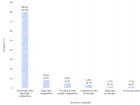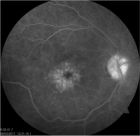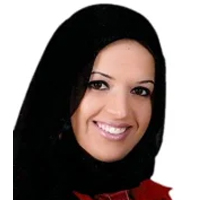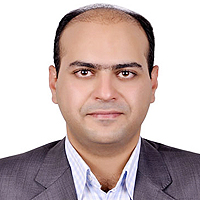Abstract
Clinical Trial
Treatment Outcome in Patients with Myofascial Orofacial Pain: A Randomized Clinical Trial
Anders Wänman*, Susanna Marklund and Negin Yekkalam
Published: 18 January, 2024 | Volume 9 - Issue 1 | Pages: 001-008
Background: Temporomandibular Disorder (TMD) pain attributed to myalgia is a common condition and patients should get advice on the best treatment option.
Objectives: The aim was to evaluate the effect of two different exercise programs, or bite splint therapy, respectively, in patients with chronic frequent primary myofascial orofacial pain.
Methods: The study was a randomized clinical trial including patients fulfilling criteria of chronic frequent primary myofascial orofacial pain with a reported pain intensity of ≥ 4 on a numerical rating scale (0-10). Ninety subjects were randomized to either bite splint, home exercises, or a supervised exercise program. Two examiners blinded to the treatment modality examined the same subject at baseline and a 3-month follow-up. Non-parametric statistical methods were applied for the outcome of treatment in intended-to-treat analyses. A P-value <0.05 was considered statistically significant.
Results: The pain severity index was significantly reduced (p < 0.001) in all treatment groups. Jaw opening capacity improved significantly (p < 0.05) for those randomized to bite splint and for those in the home exercise program. About 70% of the participants reported improvement in their TMD pain severity with no significant difference between treatments. Both exercise groups improved in jaw function at the 3-month follow-up compared to baseline. Those who had a bite splint reported significantly more improvement in their headaches compared to those in the exercise programs.
Conclusion: Jaw exercise programs and bite splint treatments had similar positive effects on TMD pain severity attributed to myalgia after 3 months.
Read Full Article HTML DOI: 10.29328/journal.johcs.1001046 Cite this Article Read Full Article PDF
Keywords:
Oral appliance; Exercise; Myalgia; Physiotherapy; Temporomandibular disorders
References
- Okeson JP. Etiology of functional disturbances in the masticatory system. In: Management of Temporomandibular Disorders and Occlusion. 2019.
- Qamar Z, Alghamdi AMS, Haydarah NKB, Balateef AA, Alamoudi AA, Abumismar MA, Shivakumar S, Cicciù M, Minervini G. Impact of temporomandibular disorders on oral health-related quality of life: A systematic review and meta-analysis. J Oral Rehabil. 2023 Aug;50(8):706-714. doi: 10.1111/joor.13472. Epub 2023 May 3. PMID: 37078711.
- Yekkalam N, Wänman A. Factors associated with clinical decision-making in relation to treatment need for temporomandibular disorders. Acta Odontol Scand. 2016;74(2):134-41. doi: 10.3109/00016357.2015.1063159. Epub 2015 Jul 3. PMID: 26139326.
- John MT, Reissmann DR, Schierz O, Wassell RW. Oral health-related quality of life in patients with temporomandibular disorders. J Orofac Pain. 2007 Winter;21(1):46-54. PMID: 17312641.
- National guidelines for dental care. https://www.socialstyrelsen.se/en/]
- Wänman A, Ernberg M, List T. Guidelines in the management of orofacial pain/TMD: An evidence-based approach. Tandlægebladet. 2016; 120 (3): 220-30.
- Armijo-Olivo S, Pitance L, Singh V, Neto F, Thie N, Michelotti A. Effectiveness of Manual Therapy and Therapeutic Exercise for Temporomandibular Disorders: Systematic Review and Meta-Analysis. Phys Ther. 2016 Jan;96(1):9-25. doi: 10.2522/ptj.20140548. Epub 2015 Aug 20. PMID: 26294683; PMCID: PMC4706597.
- Wänman A, Marklund S. Treatment outcome of supervised exercise, home exercise and bite splint therapy, respectively, in patients with symptomatic disc displacement with reduction: A randomised clinical trial. J Oral Rehabil. 2020 Feb;47(2):143-149. doi: 10.1111/joor.12888. Epub 2019 Sep 30. PMID: 31520538; PMCID: PMC7003750.
- Au AR, Klineberg IJ. Isokinetic exercise management of temporomandibular joint clicking in young adults. J Prosthet Dent. 1993 Jul;70(1):33-9. doi: 10.1016/0022-3913(93)90034-l. PMID: 8366455.
- Yoda T, Sakamoto I, Imai H, Honma Y, Shinjo Y, Takano A, Tsukahara H, Morita S, Miyamura J, Yoda Y, Sasaki Y, Tomizuka K, Takato T. A randomized controlled trial of therapeutic exercise for clicking due to disk anterior displacement with reduction in the temporomandibular joint. Cranio. 2003 Jan;21(1):10-6. doi: 10.1080/08869634.2003.11746226. PMID: 12555926.
- Michelotti A, Iodice G, Vollaro S, Steenks MH, Farella M. Evaluation of the short-term effectiveness of education versus an occlusal splint for the treatment of myofascial pain of the jaw muscles. J Am Dent Assoc. 2012 Jan;143(1):47-53. doi: 10.14219/jada.archive.2012.0018. PMID: 22207667.
- De Laat A, Stappaerts K, Papy S. Counseling and physical therapy as treatment for myofascial pain of the masticatory system. J Orofac Pain. 2003 Winter;17(1):42-9. PMID: 12756930.
- Storm Mienna C, Glas L, Magnusson M, Ilgunas A, Häggman-Henrikson B, Wänman A. Patients' experiences of supervised jaw-neck exercise among patients with localized TMD pain or TMD pain associated with generalized pain. Acta Odontol Scand. 2019 Oct;77(7):495-501. doi: 10.1080/00016357.2019.1598573. Epub 2019 Apr 8. PMID: 30957601.
- Dworkin SF, LeResche L. Research diagnostic criteria for temporomandibular disorders: review, criteria, examinations and specifications, critique. J Craniomandib Disord. 1992 Fall;6(4):301-55. PMID: 1298767.
- Farrar JT, Young JP Jr, LaMoreaux L, Werth JL, Poole MR. Clinical importance of changes in chronic pain intensity measured on an 11-point numerical pain rating scale. Pain. 2001 Nov;94(2):149-158. doi: 10.1016/S0304-3959(01)00349-9. PMID: 11690728.
- Häggman-Henrikson B, Wiesinger B, Wänman A. The effect of supervised exercise on localized TMD pain and TMD pain associated with generalized pain. Acta Odontol Scand. 2018 Jan;76(1):6-12. doi: 10.1080/00016357.2017.1373304. Epub 2017 Sep 4. PMID: 28870137.
- Ohrbach R, Larsson P, List T. The jaw functional limitation scale: development, reliability, and validity of 8-item and 20-item versions. J Orofac Pain. 2008 Summer;22(3):219-30. PMID: 18780535.
- Dworkin RH, Turk DC, Farrar JT, Haythornthwaite JA, Jensen MP, Katz NP, Kerns RD, Stucki G, Allen RR, Bellamy N, Carr DB, Chandler J, Cowan P, Dionne R, Galer BS, Hertz S, Jadad AR, Kramer LD, Manning DC, Martin S, McCormick CG, McDermott MP, McGrath P, Quessy S, Rappaport BA, Robbins W, Robinson JP, Rothman M, Royal MA, Simon L, Stauffer JW, Stein W, Tollett J, Wernicke J, Witter J; IMMPACT. Core outcome measures for chronic pain clinical trials: IMMPACT recommendations. Pain. 2005 Jan;113(1-2):9-19. doi: 10.1016/j.pain.2004.09.012. PMID: 15621359.
- Wänman A. Endurance to physical strain in patients with temporomandibular disorders: a case-control study. Acta Odontol Scand. 2012 Dec;70(6):455-62. doi: 10.3109/00016357.2011.635599. Epub 2011 Dec 12. PMID: 22149885.
- Burgess JA, Sommers EE, Truelove EL, Dworkin SF. Short-term effect of two therapeutic methods on myofascial pain and dysfunction of the masticatory system. J Prosthet Dent. 1988 Nov;60(5):606-10. doi: 10.1016/0022-3913(88)90223-5. PMID: 3199321.
- Kuzmanovic Pficer J, Dodic S, Lazic V, Trajkovic G, Milic N, Milicic B. Occlusal stabilization splint for patients with temporomandibular disorders: Meta-analysis of short and long term effects. PLoS One. 2017 Feb 6;12(2):e0171296. doi: 10.1371/journal.pone.0171296. PMID: 28166255; PMCID: PMC5293221.
- Glaros AG, Owais Z, Lausten L. Reduction in parafunctional activity: a potential mechanism for the effectiveness of splint therapy. J Oral Rehabil. 2007 Feb;34(2):97-104. doi: 10.1111/j.1365-2842.2006.01660.x. PMID: 17244231.
- Gholampour S, Gholampour H, Khanmohammadi H. Finite element analysis of occlusal splint therapy in patients with bruxism. BMC Oral Health. 2019 Sep 4;19(1):205. doi: 10.1186/s12903-019-0897-z. PMID: 31484524; PMCID: PMC6727492.
- Clark GT, Beemsterboer PL, Jacobson R. The effect of sustained submaximal clenching on maximum bite force in myofascial pain dysfunction patients. J Oral Rehabil. 1984 Jul;11(4):387-91. doi: 10.1111/j.1365-2842.1984.tb00590.x. PMID: 6589384.
- Martins WR, Blasczyk JC, Aparecida Furlan de Oliveira M, Lagôa Gonçalves KF, Bonini-Rocha AC, Dugailly PM, de Oliveira RJ. Efficacy of musculoskeletal manual approach in the treatment of temporomandibular joint disorder: A systematic review with meta-analysis. Man Ther. 2016 Feb;21:10-7. doi: 10.1016/j.math.2015.06.009. Epub 2015 Jun 25. PMID: 26144684.
- Herrera-Valencia A, Ruiz-Muñoz M, Martin-Martin J, Cuesta-Vargas A, González-Sánchez M. Effcacy of Manual Therapy in TemporomandibularJoint Disorders and Its Medium-and Long-TermEffects on Pain and Maximum Mouth Opening:A Systematic Review and Meta-Analysis. J Clin Med. 2020 Oct 23;9(11):3404. doi: 10.3390/jcm9113404. PMID: 33114236; PMCID: PMC7690916.
- Jung W, Lee KE, Suh BJ. Influence of psychological factors on the prognosis of temporomandibular disorders pain. J Dent Sci. 2021 Jan;16(1):349-355. doi: 10.1016/j.jds.2020.02.007. Epub 2020 Mar 31. PMID: 33384819; PMCID: PMC7770244.
- Huttunen J, Qvintus V, Suominen AL, Sipilä K. Role of psychosocial factors on treatment outcome of temporomandibular disorders. Acta Odontol Scand. 2019 Mar;77(2):119-125. doi: 10.1080/00016357.2018.1511057. Epub 2018 Sep 28. PMID: 30264631.
- Häggman-Henrikson B, Bechara C, Pishdari B, Visscher CM, Ekberg E. Impact of Catastrophizing in Patients with Temporomandibular Disorders-A Systematic Review. J Oral Facial Pain Headache. 2020 Fall;34(4):379-397. doi: 10.11607/ofph.2637. PMID: 33290444.
- Rehm DDS, Progiante PS, Pattussi MP, Pellizzer EP, Grossi PK, Grossi ML. Depression and Somatization in Patients with Temporomandibular Disorders in a Population-Based Cross-Sectional Study in Southern Brazil. Int J Prosthodont. 2019 May/Jun;32(3):248-250. doi: 10.11607/ijp.6209. PMID: 31034538.
- Fillingim RB, Ohrbach R, Greenspan JD, Knott C, Diatchenko L, Dubner R, Bair E, Baraian C, Mack N, Slade GD, Maixner W. Psychological factors associated with development of TMD: the OPPERA prospective cohort study. J Pain. 2013 Dec;14(12 Suppl):T75-90. doi: 10.1016/j.jpain.2013.06.009. PMID: 24275225; PMCID: PMC3855656.
- Celić R, Braut V, Petricević N. Influence of depression and somatization on acute and chronic orofacial pain in patients with single or multiple TMD diagnoses. Coll Antropol. 2011 Sep;35(3):709-13. PMID: 22053545.
- Manfredini D, Lombardo L, Siciliani G. Temporomandibular disorders and dental occlusion. A systematic review of association studies: end of an era? J Oral Rehabil. 2017 Nov;44(11):908-923. doi: 10.1111/joor.12531. Epub 2017 Jul 2. PMID: 28600812.
- Yekkalam N, Wänman A. Association between signs of hyperalgesia and reported frequent pain in jaw-face and head. Acta Odontol Scand. 2021 Apr;79(3):188-193. doi: 10.1080/00016357.2020.1814963. Epub 2020 Sep 12. PMID: 32924721.
- Marklund S, Häggman-Henrikson B, Wänman A. Risk factors associated with incidence and persistence of frequent headaches. Acta Odontol Scand. 2014 Nov;72(8):788-94. doi: 10.3109/00016357.2014.906652. Epub 2014 Apr 7. PMID: 24702010.
- International Classification of Orofacial Pain, 1st edition (ICOP). Cephalalgia. 2020 Feb;40(2):129-221. doi: 10.1177/0333102419893823. PMID: 32103673.
Figures:

Figure 1

Figure 2
Similar Articles
-
Management of temporomandibudar joint ankylosis with costo-chondral graft application: Case report and review of literatureNikolaos Kolomvos*,Agamemnon Chliaoutakis,Nikolaos Papadogeorgakis . Management of temporomandibudar joint ankylosis with costo-chondral graft application: Case report and review of literature. . 2020 doi: 10.29328/journal.johcs.1001030; 5: 001-005
-
Treatment Outcome in Patients with Myofascial Orofacial Pain: A Randomized Clinical TrialAnders Wänman*, Susanna Marklund, Negin Yekkalam. Treatment Outcome in Patients with Myofascial Orofacial Pain: A Randomized Clinical Trial. . 2024 doi: 10.29328/journal.johcs.1001046; 9: 001-008
Recently Viewed
-
Host biomarkers for early diagnosis of infectious diseases: A comprehensive reviewArindam Chakraborty*,Singh Monica. Host biomarkers for early diagnosis of infectious diseases: A comprehensive review. Int J Clin Microbiol Biochem Technol. 2019: doi: 10.29328/journal.ijcmbt.1001005; 2: 001-007
-
Diabetes and red blood cell parametersMd. Sadikuj Jaman*,Md. Sohanur Rahman,Rubaiya Rafique Swarna,Joyanto Mahato,Md. Milon Miah,Mosa. Ayshasiddeka. Diabetes and red blood cell parameters. Ann Clin Endocrinol Metabol. 2018: doi: 10.29328/journal.acem.1001004; 2: 001-009
-
Indian spices and Caffeine treatment for Obesity and Cardiovascular diseaseIan James Martins*. Indian spices and Caffeine treatment for Obesity and Cardiovascular disease. Ann Clin Endocrinol Metabol. 2018: doi: 10.29328/journal.acem.1001005; 2: 010-014
-
New pharmacological strategies in some metabolic endocrine disorder under a toxicological approachLuisetto M*,Ghulam Rasool Mashori,Cabianca luca. New pharmacological strategies in some metabolic endocrine disorder under a toxicological approach. Ann Clin Endocrinol Metabol. 2018: doi: 10.29328/journal.acem.1001006; 2: 015-021
-
Exercise preserves pancreatic β-cell mass and function in obese OLETF ratsJiawei Zhao,Zhihong Yang,Min He,Qinghua Wang,Renming Hu*. Exercise preserves pancreatic β-cell mass and function in obese OLETF rats. Ann Clin Endocrinol Metabol. 2018: doi: 10.29328/journal.acem.1001007; 2: 022-029
Most Viewed
-
Impact of Latex Sensitization on Asthma and Rhinitis Progression: A Study at Abidjan-Cocody University Hospital - Côte d’Ivoire (Progression of Asthma and Rhinitis related to Latex Sensitization)Dasse Sery Romuald*, KL Siransy, N Koffi, RO Yeboah, EK Nguessan, HA Adou, VP Goran-Kouacou, AU Assi, JY Seri, S Moussa, D Oura, CL Memel, H Koya, E Atoukoula. Impact of Latex Sensitization on Asthma and Rhinitis Progression: A Study at Abidjan-Cocody University Hospital - Côte d’Ivoire (Progression of Asthma and Rhinitis related to Latex Sensitization). Arch Asthma Allergy Immunol. 2024 doi: 10.29328/journal.aaai.1001035; 8: 007-012
-
Causal Link between Human Blood Metabolites and Asthma: An Investigation Using Mendelian RandomizationYong-Qing Zhu, Xiao-Yan Meng, Jing-Hua Yang*. Causal Link between Human Blood Metabolites and Asthma: An Investigation Using Mendelian Randomization. Arch Asthma Allergy Immunol. 2023 doi: 10.29328/journal.aaai.1001032; 7: 012-022
-
An algorithm to safely manage oral food challenge in an office-based setting for children with multiple food allergiesNathalie Cottel,Aïcha Dieme,Véronique Orcel,Yannick Chantran,Mélisande Bourgoin-Heck,Jocelyne Just. An algorithm to safely manage oral food challenge in an office-based setting for children with multiple food allergies. Arch Asthma Allergy Immunol. 2021 doi: 10.29328/journal.aaai.1001027; 5: 030-037
-
Snow white: an allergic girl?Oreste Vittore Brenna*. Snow white: an allergic girl?. Arch Asthma Allergy Immunol. 2022 doi: 10.29328/journal.aaai.1001029; 6: 001-002
-
Cytokine intoxication as a model of cell apoptosis and predict of schizophrenia - like affective disordersElena Viktorovna Drozdova*. Cytokine intoxication as a model of cell apoptosis and predict of schizophrenia - like affective disorders. Arch Asthma Allergy Immunol. 2021 doi: 10.29328/journal.aaai.1001028; 5: 038-040

If you are already a member of our network and need to keep track of any developments regarding a question you have already submitted, click "take me to my Query."

















































































































































